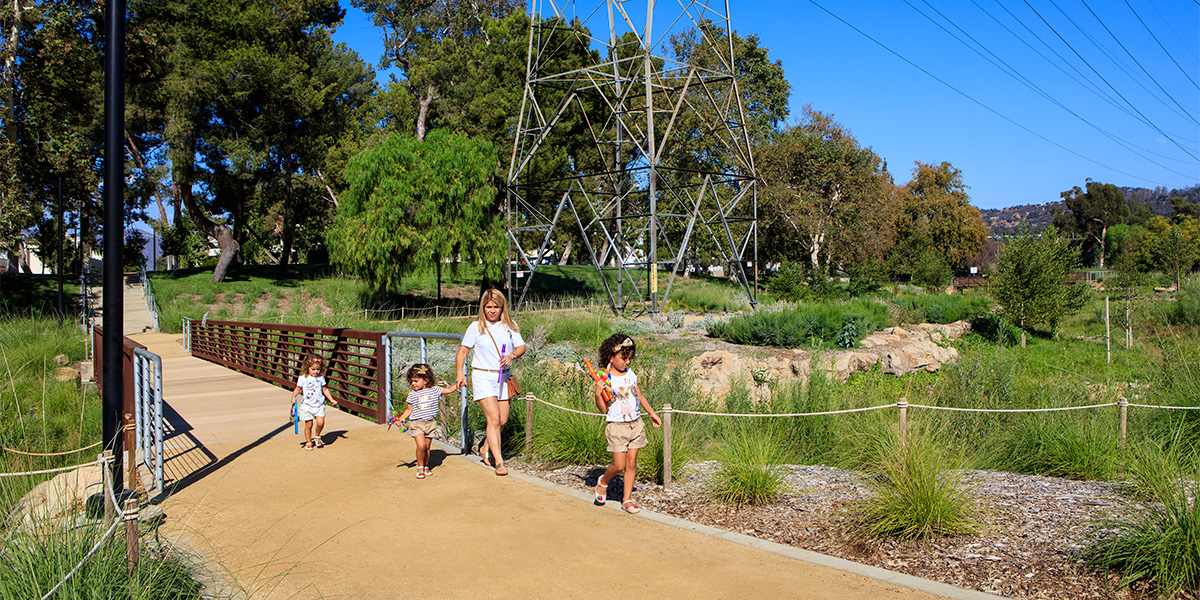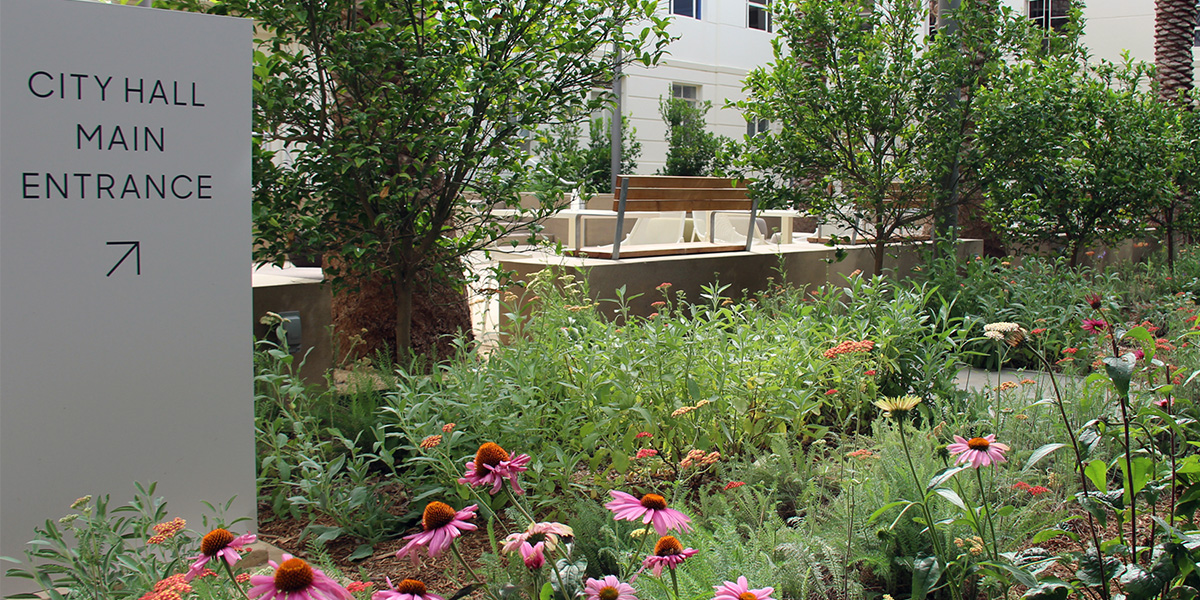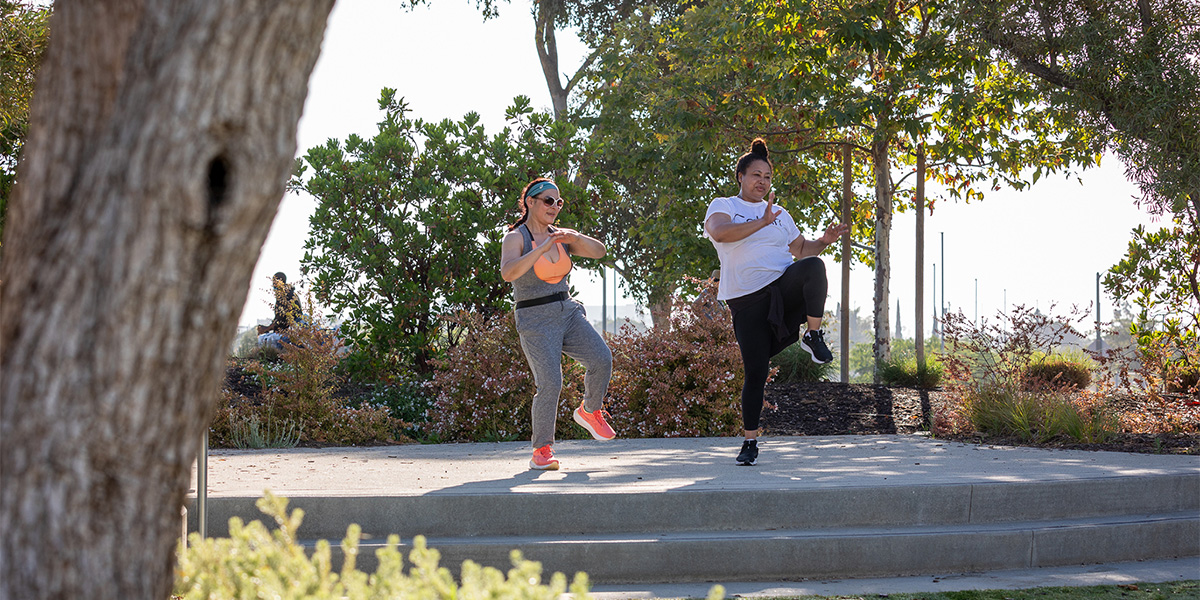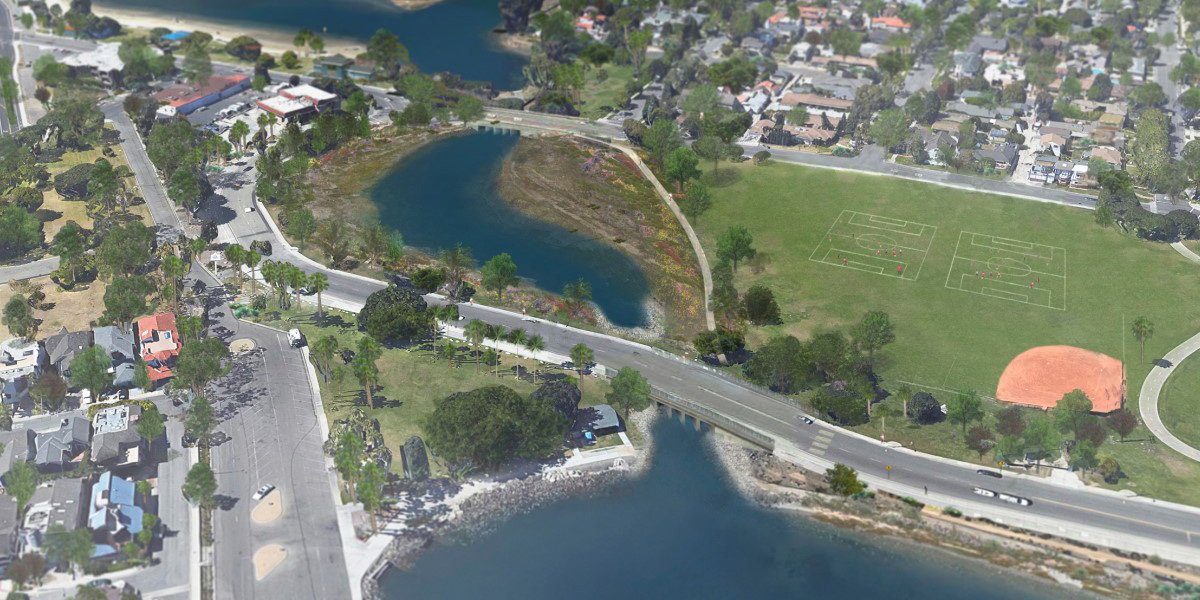By Jennifer Zell, MIG Director of Regenerative Design
“We will have to regain control of our means for supporting life.”
— John Tillman Lyle
As landscape architects and environmental design professionals, we have become “greener” in the past few decades. We have expanded our sustainability practices, developed new methodologies and technologies for quantifying environmental impact, and increased our professional sustainability certifications. But these collective efforts have not reduced, or even slowed, the massive scale of natural resource depletion, biodiversity loss and greenhouse gas emissions that are a direct result of our professional activities.
Regenerative Design offers a critical opportunity to shape a positive future—by radically reshaping how we practice. It’s time to change our mindset.
To stop the current trajectory of environmental decline, we can transform the way we practice and mobilize quickly to reverse degenerative cycles. Moving away from a model of just doing less bad by following sustainability checklists and moving toward whole systems and ecological frameworks for instilling positive social and ecological benefits. We can change these practices from being niche or outlier ideas, to becoming our new “business as usual.” And, reciprocally advance both environmental and social well-being.
Environment Catalyzes Behavior
By shaping the environment, we shape behavior. The design of the environment often locks in how we behave within that environment, as well as our patterns of resource consumption. Installing a lush green lawn requires long-term energy and resource sinks with high water use and fertilizer applications. But constructing a cool, shaded pedestrian street that’s safe for walking and connected to transit can nudge people into decades-long patterns of using human powered, and low greenhouse gas emitting mobility options.
Learning from Nature’s Evolutionary Wisdom
Regenerative Design reconsiders the relationship between nature and humanity, reframing the reciprocal relationships between social systems and ecosystems. It is the practice of engaging living systems to create and sustain diverse, resilient and self-renewing communities supporting life—in all forms.
We use nature’s “closed loop” operating systems to remake and manage urban environments—especially those that are degraded, polluted or on a trajectory of decline—by integrating ecological frameworks into physical planning and design.
For example, nature creates a closed-loop system in a forest when a tree falls and its decay replenishes the soil, and creates habitats for multiple species and myriad life forms. When snow melts, it replenishes streams and lakes, nurturing aquatic and riparian habitats, eventually flowing into the ocean. And when wetlands store and cleanse urban runoff, they create habitat, and protect the landscape from stormwater flooding.
Regenerative Design is inherently self-renewing and generates interrelated benefits for humans and the planet. Its potential to move us from a trajectory of decline to one of increasing diversity and complexity of life, points the way toward a positive future.
Moving toward a regenerative model of environmental design is a team effort, requiring landscape architects, planners, biologists, social scientists, health and equity professionals to collaborate and innovate on projects from design documentation to development standards, with strategy plans and maintenance guidelines that prioritize mutual benefits for people and the planet.
SEVEN PRINCIPLES OF REGENERATIVE DESIGN
Regenerative Design:
- Imagines and gives shape and form to systems, places, buildings and cities based on living systems understanding and application.
- Restores frayed connections in social and ecological systems by modifying and reshaping the built environment.
- Removes human-made barriers to natural cycles of life and strips away the layers that have built up and are embedded in cities to reanimate self-renewing functional processes.
- Operates within the framework that we can only meet the needs of humans when the needs of other species are also met—and this is done by maintaining the integrity of nature’s life-support systems in design and development.
- Requires a merging of disciplines and moving away from modernism’s ideals of dualism, competition of individuals, simplification and specialization, and universal design and uniformity—toward evolutionary patterns of increasing diversity and complex networks of interconnectedness and resiliency and the design of unique places adapted to local conditions.
- Combines new knowledge and technologies with indigenous and traditional knowledge and practices that are inherently low carbon, low energy consuming, and material recycling process and systems.
- Breaks with degenerative patterns of linear flows and one-way systems and designs and implements closed loops flows to model self-regulating organisms and models of symbiotic relationships of mutual aid by designing and managing landscapes, places and cities to support ongoing self-renewal by operating within resource limitations and ecological footprints.
Create a New Core Business Model
Three key concepts have emerged in how we look at our work that demonstrate how to move Regenerative Design practices from a pilot stage into core business practices.
- Identify innovations in your existing portfolio of work that have applied Regenerative Design principles and have created net positive impacts.
- Integrate those types of innovations into all your work. This can be tricky because most organizations have a natural tendency to modify or water down innovations to fit within existing practice models. But moving these practices/principles from novel ideas to standard practice can increase their commercial viability, gain larger buy in and increase capacity across your organization.
- Practice Regenerative Design as part of your core capabilities and services—move the baseline and transform your business as usual.
Here are a few examples of what we did at MIG, beginning with identifying regenerative practices in our existing portfolio, integrating those innovations into new work, and making those innovations standard procedure.
1. Identify

Santa Monica City Hall East. Using the Living Building Challenge framework, we reframed the expected performance of the building’s landscape from being ornamental and aesthetic, to being fully integrated into the building occupants’ daily lives to encourage a hyper-local food source. Innovations were required to work within the building site’s ecological footprint, which balanced supply and demand for water and energy—all energy is generated on site, as is all water used for irrigation. About 58% of the landscape is either edible or has medicinal properties and can be easily harvested and consumed. The landscape provides herbs, avocados, tangerines, pomegranates and pineapple guava to workers and visitors (during Covid restrictions, city employees harvested from the landscape to avoid the grocery store). The building recycles water from every source—including graywater and rainwater harvesting systems—and many of the plants need only low amounts of supplemental water. The project demonstrates the health interdependencies of people and place.
Earvin “Magic” Johnson Park. One of the primary project goals was to significantly reduce the park’s dependency on imported, expensive, potable water sources. Innovation came about during a value engineering exercise when it was discovered that the cost to drain the water guzzling manmade, lakes was cost prohibitive. We developed a new design solution that diverts stormwater and urban runoff from a 375-acre surrounding watershed to the park and cleans it up with a mechanical and biological system. The stored water irrigates the park, refills the lakes and is returned, in a cleansed state, to nearby Compton Creek where it eventually flows to the Pacific Ocean. The mechanical system doesn’t look natural, but it mimics natural functions and processes in cleansing and recycling water. This is a move away from a linear water model (open a tap, use water, flush it into in rivers and oceans) to a circular system of water flow (cleanse, store, reuse and share with other species through new wetland habitat creation).
USC Native and Climate Adapted Plant Master Plan. Maintaining beautiful landscaping was an absolute requirement—but by using data-driven models we could move the needle, creating measurable metrics and a plan to achieve significant potable water use savings, as well as increase biodiversity on the University Park campus. We first wrote sustainability landscape guidelines, then created pathways for implementation. This required creating a social and perceptual framework shift in evaluating landscape performance, celebrating the beauty of the native landscape and working within natural resource limitations. We established a transition plan for the campus landscaping to, over time, change from purely ornamental to climate adapted, climate future and native plant habitats which will support campuswide pollinator pathways and increase biodiversity in the downtown Los Angeles area. This is achieved through developing typology applications and by developing pilot implementation plots that help staff and maintenance teams learn, adapt and repeat over time.
2. Integrate
While we can have the most impact at the beginning of a project, it’s key to view every stage of a project with a regenerative design lens. Because landscape construction projects lock maintenance and operations teams into patterns of resource consumption and patterns of human behavior, we need to advocate for transformations at the start of every project and then continue to refine and adapt.

Magic Johnson Park. With a closed loop water recycling system in place, we moved to perforate and remove the lakes’ concrete edges—which removed manmade barriers to natural functions. we realized we could “make like a beaver.” Pull up the concrete and let natural process reconnect. New wetlands and microbes cleanse water and increase native habitat. Hundreds of species of birds have returned to the area, nesting and making more birds, increasing abundance, diversity and complexity. The healthy environment builds social connections and health as people walk, celebrate and relax in the park.

Colorado Lagoon. In its natural state, Long Beach’s Colorado Lagoon was connected to the Pacific Ocean. But for over 90 years, tidal flow has been significantly reduced, with water forced through a box culvert. With many stormdrains dumping into it, toxic pollutants built up. Habitat and wildlife disappeared. First steps to change the trajectory of decline were to divert stormdrains and dredge to remove heavy metals and other contaminants. Currently, the underground channel is being removed and the connection daylighted into an open channel restoration and, with it, about 3 acres of new coastal habitat is being restored, including intertidal habitats, subtidal habitats, with upland habitat and eelgrass beds. The restorative project adds educational signage and passive recreational trails. The community has a healthier, more natural resource—along with vital food, nesting and foraging space for many non-human species.

Johnny Carson Park. The trees were dying from fungus-carrying beetle, park facilities were worn, and a concrete creek was sending polluted stormwater straight into the LA River. Beyond replacing trees and other facilities, we realized that Little Tujunga Wash drainage channel could be transformed into the centerpiece of the park. The park is now a recreation destination with a natural streambed, bioswales that cleanse the water through natural filtration, 8 acres of natural habitat, improved pedestrian access with two new bridges, ADA walking paths lined with parcourse equipment, and a California native plant palette. Underground, crews installed new irrigation pipes that tap into captured water for park irrigation. The sustainable park design provides multiple benefits of enhanced habitat increasing native biodiversity, improved energy and water efficiency, public access and water quality.
3. Practice
It is within our reach to transform our professional practice from mitigating negatives to optimizing positives. When we do that, populations rebound, people connect to nature and connect with each other. Our buildings and cities are better for people’s health, use less energy, and our parks and open spaces utilize nature’s power to heal.
Innovative disruptions cannot remain disruptive—they must become part of how we define the practice of environmental design and development. Key to incorporating regenerative design practices into everything we do is setting a long-term vision and translating that vision into strategic actions. Balancing resource demands with supply—at the city scale and site scale—requires skills and integrated cooperation across disciplines including advocacy at a policy level and technical expertise in the design and implementation phases.
At MIG, we bring together teams of landscape architects, civil engineers, biologists and public health planners—sometimes surprising our clients! Who fairly quickly understand the benefits of a holistic approach.
Many organizations—and clients—think that innovation and new approaches will cost more. But in looking at life cycle costs and return on investment, a Regenerative Design approach can actually save money. Magic Johnson Park’s distributed system of local stormwater management for an entire watershed is cost-effective, saving potable water for drinking and keeps irrigation playfields out of the fluctuating rate payment system.
Rebuild Reciprocal Relationships
We have a window of time. As designers we can play a powerful role in helping clients understand the value of positively re-shaping the environment and rebuilding reciprocal relationships—and in so doing benefit all species. It’s new, it’s different, it’s challenging, it’s uncertain.
But we have the tools, techniques and knowledge to move the needle; to create opportunities to expand our spere of influence and increase our agency to transform our practice. We can pull the levers necessary to help organizations, institutions and communities redirect the trajectory of decline and degeneration to become a trajectory of increasing health and stabilization, increasing biodiversity and regeneration. We do it site-by-site-by-site. Until we reach a tipping point and our entire practice shifts.
The combination of uncertainty and agency can be hugely energizing, when we—designers, clients, community members—see that creating positive change is something that we can be a part of and that we can influence.
Jennifer Zell is an award-winning landscape architect who leverages over two decades of experience to produce innovative design solutions in public, commercial and private landscapes. She discovered a love for her profession in high school—drawn by the prospect of combining her creativity with her love of the outdoors—from mountains to deserts to the sea. Jennifer is committed to increasing biodiversity in urban areas, to enhance and sustain the natural world. Through her designs, she strives to reveal the hidden qualities that make each place a unique experience—reframing the space, features, plants, light, or geology that exists there and allowing it to be seen anew.




